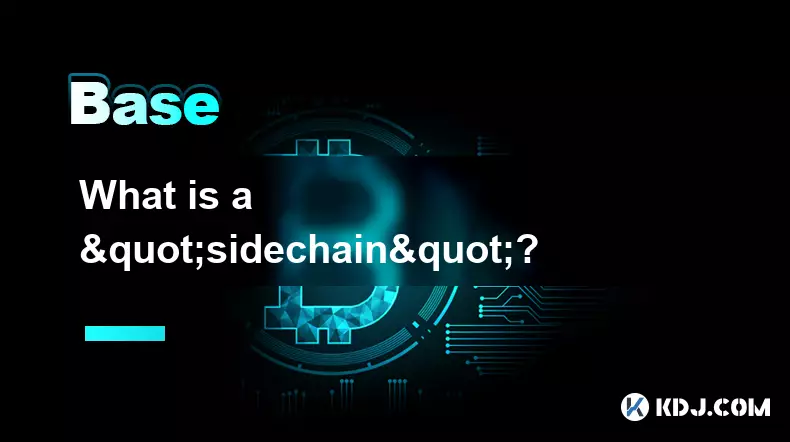-
 bitcoin
bitcoin $115692.075601 USD
5.13% -
 ethereum
ethereum $4162.931611 USD
11.68% -
 bnb
bnb $1310.063287 USD
17.56% -
 tether
tether $1.000983 USD
0.00% -
 xrp
xrp $2.534505 USD
8.16% -
 solana
solana $198.235737 USD
13.49% -
 usd-coin
usd-coin $1.000236 USD
0.02% -
 dogecoin
dogecoin $0.207352 USD
12.89% -
 tron
tron $0.323043 USD
3.62% -
 cardano
cardano $0.701559 USD
11.88% -
 hyperliquid
hyperliquid $39.924597 USD
8.30% -
 chainlink
chainlink $18.934457 USD
11.56% -
 ethena-usde
ethena-usde $1.000552 USD
0.02% -
 stellar
stellar $0.340575 USD
7.05% -
 bitcoin-cash
bitcoin-cash $545.011757 USD
8.86%
What is "EIP-1559" and how did it change Ethereum?
EIP-1559 revolutionized Ethereum’s fee market by introducing a dynamic base fee that’s burned, reducing ETH supply and making transaction costs more predictable.
Oct 12, 2025 at 03:00 am

Understanding EIP-1559 and Its Core Mechanism
1. EIP-1559 is a protocol upgrade introduced to the Ethereum blockchain as part of the London hard fork in August 2021. It fundamentally altered how transaction fees are processed on the network. Prior to this update, users had to bid on gas prices through an auction-style system, leading to unpredictable costs during periods of high congestion.
2. The key innovation of EIP-1559 is the introduction of a base fee, which is dynamically adjusted based on network demand. This base fee is calculated algorithmically and changes with each block, increasing when blocks are more than half full and decreasing when they are underutilized. This mechanism aims to stabilize transaction costs and reduce volatility.
3. Unlike traditional transaction fees, the base fee is not paid to miners. Instead, it is burned, meaning it is permanently removed from circulation. This burning process reduces the total supply of ETH over time, introducing a deflationary pressure that can influence the asset's long-term value proposition.
4. Users can still include a tip, known as a priority fee, which goes directly to miners or validators. This ensures that transactions requiring faster processing can still be prioritized, maintaining incentives for block producers even in a more predictable fee environment.
5. By decoupling the base fee from miner rewards, EIP-1559 shifts part of Ethereum’s monetary policy toward scarcity-driven dynamics. The transparency and predictability of fees also improve user experience, especially for wallets and decentralized applications that automate transaction submissions.
Impact on Transaction Fee Economics
1. Before EIP-1559, estimating gas costs was challenging due to fluctuating demand and competitive bidding. Users often overpaid to ensure their transactions were included promptly. With the new system, wallets can now suggest accurate base fees based on real-time network conditions, reducing guesswork.
2. The inclusion of a burn mechanism means that every transaction contributes to reducing the circulating supply of ETH. During high usage periods—such as NFT mints or major DeFi launches—large volumes of ETH are burned, sometimes exceeding the amount issued as block rewards, resulting in net deflation.
3. This shift has redefined how economic activity on Ethereum translates into value accrual for the native token. Rather than all fees enriching miners, a portion now benefits all ETH holders by decreasing supply, aligning network usage with tokenomics in a novel way.
4. Some critics argue that the base fee adjustment algorithm can react slowly to sudden spikes in demand, causing short-term congestion. However, subsequent improvements and analyses have shown that overall fee efficiency and user satisfaction have improved since implementation.
5. The change also laid groundwork for future scalability solutions by making fee markets more predictable, which is crucial for layer-2 networks and rollups that rely on Ethereum for finality and security.
Effects on Miners and Validators
1. Miners initially expressed concerns about EIP-1559 because it reduced their income by eliminating their share of the base fee. Although they still receive tips and block rewards, the removal of a significant revenue stream led to resistance from parts of the mining community prior to activation.
2. Despite opposition, the Ethereum community overwhelmingly supported the upgrade, viewing long-term network health and user experience as more important than short-term miner incentives. The successful deployment demonstrated the platform’s ability to undergo contentious upgrades through consensus.
3. After the transition to Proof-of-Stake with 'The Merge,' validators replaced miners, and the fee structure became even more relevant. Validators now earn only the priority fee and block rewards, while the base fee continues to be burned, reinforcing the deflationary model.
4. The reduction in miner extractable value (MEV) related to fee bidding has also contributed to a fairer transaction ordering environment. While MEV still exists, the predictability of base fees limits certain types of front-running strategies.
5. Overall, EIP-1559 helped shift Ethereum’s incentive structure away from raw computational power toward sustainable participation, supporting its evolution into a more efficient and economically sound platform.
Frequently Asked Questions
What happens to the ETH that gets burned under EIP-1559?Eth burned under EIP-1559 is permanently removed from circulation. It is sent to a non-retrievable address, effectively reducing the total supply of ETH. This process is irreversible and contributes to the token's scarcity.
Does EIP-1559 make Ethereum transactions cheaper?EIP-1559 does not guarantee lower fees but makes them more predictable. During low congestion, users may pay less than before, but during peak times, fees can still rise. The main benefit is transparency and reduced overpayment due to inaccurate bidding.
Can the base fee be manipulated by miners or validators?The base fee is determined algorithmically based on block utilization and cannot be directly manipulated. Validators have limited influence through block size adjustments, but the protocol constrains deviations, maintaining fee stability.
How does EIP-1559 affect Ethereum’s inflation rate?By burning ETH with every transaction, EIP-1559 introduces deflationary pressure. When the amount burned exceeds new ETH issued as rewards, the net supply decreases, potentially turning Ethereum into a deflationary asset under certain usage conditions.
Disclaimer:info@kdj.com
The information provided is not trading advice. kdj.com does not assume any responsibility for any investments made based on the information provided in this article. Cryptocurrencies are highly volatile and it is highly recommended that you invest with caution after thorough research!
If you believe that the content used on this website infringes your copyright, please contact us immediately (info@kdj.com) and we will delete it promptly.
- XRP Price Prediction: Weekend Rollercoaster or Rally?
- 2025-10-12 08:45:16
- Bittensor (TAO): Super Bullish Signals Point to Potential 2x Rally
- 2025-10-11 10:25:12
- Silver Price Correction: Navigating the Dip & Identifying Key SEO Keywords
- 2025-10-11 10:25:12
- Decoding Crypto Trends: Bittensor's Bull Run, Cardano's Dip, and LivLive's Presale Buzz in 'Uptober 2025'
- 2025-10-12 08:45:16
- MoonBull: The Crypto Meme Coin Promising 1000x Gains?
- 2025-10-11 10:30:01
- Crypto Payroll Revolution: Stablecoins, Altcoins, and the Future of Salary Payments
- 2025-10-11 10:30:01
Related knowledge

What does it mean for code to be "open source" in crypto?
Oct 12,2025 at 01:54pm
Understanding Open Source in the Cryptocurrency Ecosystem1. In the context of cryptocurrency, open source refers to software whose code is publicly ac...

What is the purpose of a "testnet"?
Oct 12,2025 at 09:01am
Understanding the Role of Testnets in Blockchain Development1. A testnet serves as a parallel version of a blockchain network, designed specifically f...

How to avoid phishing scams in crypto?
Oct 13,2025 at 06:18pm
Understanding Common Crypto Phishing Tactics1. Cybercriminals frequently use fake websites that mirror legitimate crypto exchanges or wallet platforms...

What is the difference between single-collateral and multi-collateral Dai?
Oct 12,2025 at 05:18pm
Understanding Single-Collateral Dai1. Single-Collateral Dai (SCD) was the original version of the Dai stablecoin launched by MakerDAO in 2017. It allo...

What is a "sidechain"?
Oct 13,2025 at 02:36pm
Understanding the Concept of Sidechains1. A sidechain is a blockchain that operates independently but is connected to another blockchain, known as the...

What is "EIP-1559" and how did it change Ethereum?
Oct 12,2025 at 03:00am
Understanding EIP-1559 and Its Core Mechanism1. EIP-1559 is a protocol upgrade introduced to the Ethereum blockchain as part of the London hard fork i...

What does it mean for code to be "open source" in crypto?
Oct 12,2025 at 01:54pm
Understanding Open Source in the Cryptocurrency Ecosystem1. In the context of cryptocurrency, open source refers to software whose code is publicly ac...

What is the purpose of a "testnet"?
Oct 12,2025 at 09:01am
Understanding the Role of Testnets in Blockchain Development1. A testnet serves as a parallel version of a blockchain network, designed specifically f...

How to avoid phishing scams in crypto?
Oct 13,2025 at 06:18pm
Understanding Common Crypto Phishing Tactics1. Cybercriminals frequently use fake websites that mirror legitimate crypto exchanges or wallet platforms...

What is the difference between single-collateral and multi-collateral Dai?
Oct 12,2025 at 05:18pm
Understanding Single-Collateral Dai1. Single-Collateral Dai (SCD) was the original version of the Dai stablecoin launched by MakerDAO in 2017. It allo...

What is a "sidechain"?
Oct 13,2025 at 02:36pm
Understanding the Concept of Sidechains1. A sidechain is a blockchain that operates independently but is connected to another blockchain, known as the...

What is "EIP-1559" and how did it change Ethereum?
Oct 12,2025 at 03:00am
Understanding EIP-1559 and Its Core Mechanism1. EIP-1559 is a protocol upgrade introduced to the Ethereum blockchain as part of the London hard fork i...
See all articles























![[4K 60fps] Anyway by Retropt (1 Coin) [4K 60fps] Anyway by Retropt (1 Coin)](/uploads/2025/10/13/cryptocurrencies-news/videos/k-fps-retropt-coin/68ec4f42a41d0_image_500_375.webp)


















































